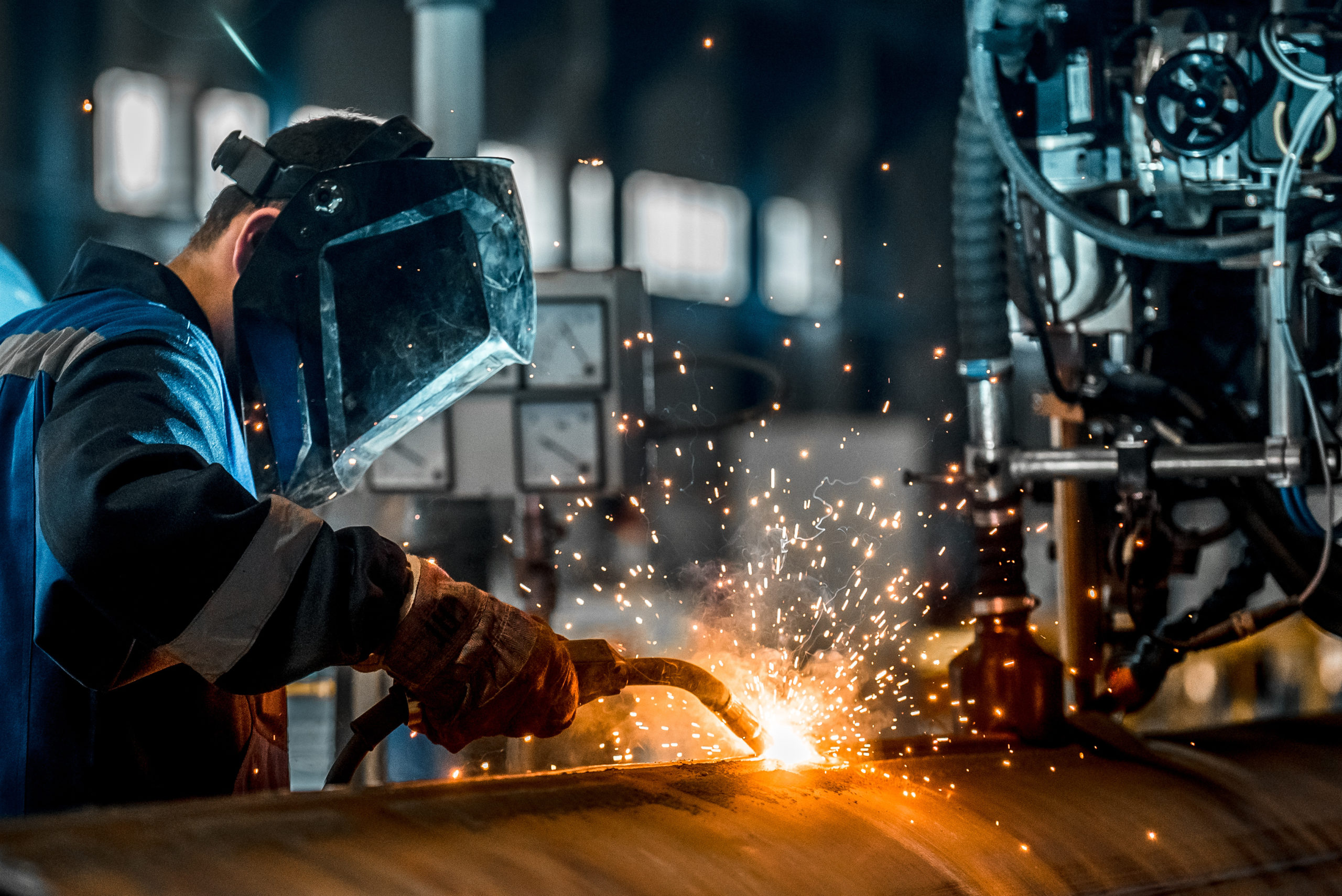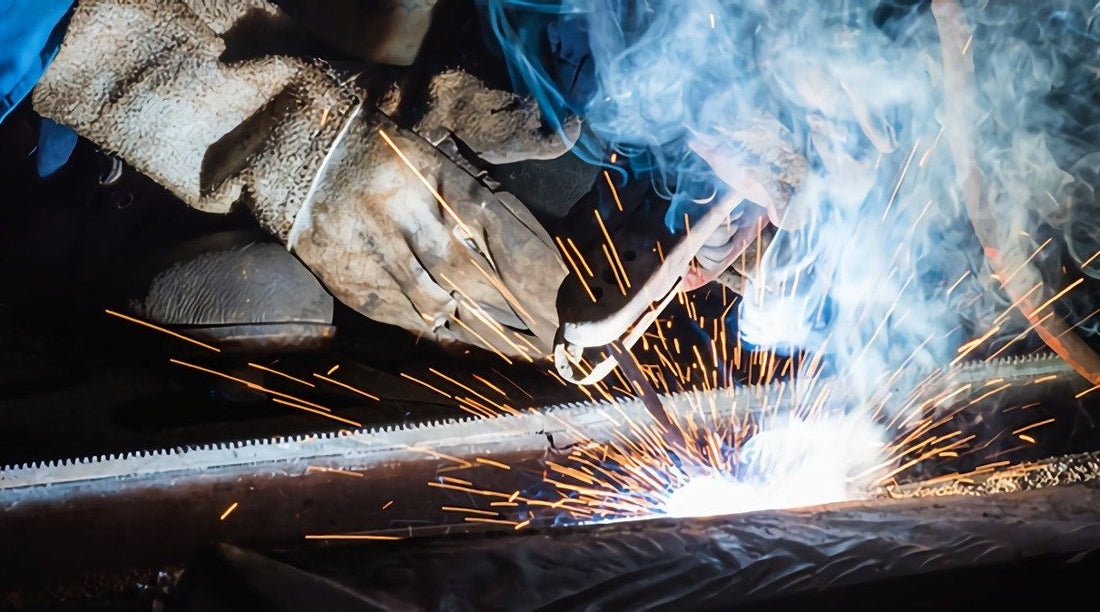Everything about Welding: Secret Insights Into Techniques and Best Practices for Success
Welding encompasses a variety of methods, each fit for certain products and applications. Comprehending these approaches, such as GMAW, SMAW, and TIG, is essential for achieving excellent results. Furthermore, the best devices and security methods can not be ignored. As preparation and fixing play important functions in the welding procedure, understanding these aspects can significantly enhance the top quality of the end product. What are the essential factors that ensure a successful weld?
Understanding Various Welding Methods
Welding methods encompass a selection of approaches, each suited to specific applications and materials. Among one of the most typical strategies are Gas Steel Arc Welding (GMAW), Shielded Metal Arc Welding (SMAW), and Tungsten Inert Gas Welding (TIG) GMAW, also called MIG welding, is prominent for its rate and adaptability, making it suitable for thin materials. SMAW, or stick welding, is preferred for its simplicity and effectiveness in exterior environments, specifically with thicker metals. TIG welding supplies precision and control, making it suitable for detailed work and non-ferrous steels (Welding). Each technique has its one-of-a-kind advantages and factors to consider, enabling welders to pick the most effective approach based on the project's needs, product kind, and desired results. Comprehending these techniques is vital for successful welding
Vital Welding Tools and Devices
While numerous welding techniques need details abilities, the right equipment and devices are just as necessary for achieving high quality outcomes. Vital welding tools includes welding equipments, which differ relying on the strategy-- such as MIG, TIG, or stick welding. Safety gear, consisting of aprons, safety helmets, and gloves, guarantees safety and security and convenience throughout the process. Furthermore, clamps and fixtures help safeguard products in location, ensuring accuracy in welds. Consumables like welding poles, cable, and securing gas are likewise critical elements that influence the high quality of the weld. Tools such as cutters and mills promote surface preparation and post-weld ending up, contributing to a professional end result. Purchasing high-grade tools ultimately boosts the effectiveness and effectiveness of welding tasks.
Security Practices in Welding
Proper security practices are necessary in the welding market to protect workers from possible risks. Welders must put on proper personal protective tools (PPE), consisting of headgears with proper shading, handwear covers, and flame-resistant garments. Sufficient ventilation is vital to reduce direct exposure to damaging fumes and gases produced throughout the welding process. In addition, workers ought to be learnt the proper handling of welding equipment to prevent mishaps. Fire precaution, such as maintaining flammable products away from the welding location and having fire extinguishers readily available, are required. Normal evaluations of tools and offices can aid identify possible threats before they cause crashes. By sticking to these security techniques, welders can create a safer working atmosphere and lessen risks related to their profession.
Readying Materials for Welding
Preparing products for welding is an essential action that significantly affects the quality and integrity of the final product (Belgrade Fabrication). Correct prep work involves cleaning the surfaces to get rid of impurities such as dust, oil, and rust, which can compromise the weld. Methods such as grinding, fining sand, or making use of solvents are typically utilized to accomplish a tidy surface. Additionally, guaranteeing that the products mesh snugly is vital; spaces can bring about weak welds. It's also crucial to consider the alignment and positioning of the parts, as this will certainly influence the simplicity of welding and the last result. Picking the ideal filler material and making sure compatibility with the base metals is crucial for achieving strong, resilient welds.
Tips for Achieving High-Quality Welds
Achieving high-grade welds requires attention to information and adherence to best methods throughout the welding procedure. Correct joint prep work is vital, guaranteeing surfaces are tidy and free from contaminants. Choosing the ideal filler material and welding strategy based upon the base metals is essential for excellent bonding. Keeping regular travel rate and angle while welding can promote and avoid flaws harmony. In addition, controlling heat input is crucial; extreme warm can cause bending and weakened joints. Consistently inspecting the welds throughout the procedure enables immediate adjustments if required. Using ideal post-weld therapies, such as cleansing and stress relief, can enhance the sturdiness and stability of the weld, ultimately guaranteeing a successful result.
Fixing Common Welding Issues
Welding usually presents difficulties that can impact the high quality and stability of the final product. Common concerns such as porosity, inconsistent weld grains, and overheating can occur, each requiring details repairing strategies. Comprehending these problems is necessary for welders to boost their abilities and achieve optimal results.
Porosity Problems Clarified
Porosity can typically be overlooked, it stays a crucial problem in welding that can endanger the integrity of an ended up product. Porosity refers to the visibility of tiny gas pockets within the weld bead, which can deteriorate the joint and lead to early failure. This trouble usually emerges from pollutants, dampness, or improper protecting gas coverage during the welding process. To minimize porosity, welders need to validate that the base materials are completely dry and tidy, utilize proper securing gases, and preserve regular welding parameters. On a regular basis examining the devices and atmosphere can additionally help recognize prospective problems before they materialize in the weld. Attending to porosity properly is essential for attaining solid, sturdy welds that meet top quality criteria.

Inconsistent Weld Beans
Irregular weld beads can significantly impact the quality and toughness of a completed item. Various variables add to this problem, including incorrect traveling speed, inaccurate amperage setups, and irregular electrode angles. When the welder moves as well swiftly, a bead may appear narrow and lack penetration, while relocating too gradually can create excessive buildup. In addition, using the incorrect amperage can cause either undercutting or extreme spatter, both of which concession weld integrity. The welder's method, such as irregular lantern motion, can additionally bring about uneven grain look. To minimize these problems, welders must concentrate on keeping constant, regulated movements and making sure appropriate tools setups to attain uniformity in their welds. important source Uniformity is key to attaining solid and reputable welds.
Getting Too Hot and Warping Issues
Too much warmth during the welding procedure can lead to significant getting too hot and warping concerns, influencing the architectural integrity of the workpiece. These troubles usually show up as distortion, which can compromise placement and fit-up, making more setting up testing. Factors adding to overheating include the choice of welding specifications, such as voltage and take a trip speed, in addition to the sort of material being bonded. To reduce these concerns, welders must keep regular travel speed and suitable warmth input while keeping track of the workpiece temperature level. In addition, preheating or post-weld warm treatment can assist ease anxieties brought on by quick cooling - Montana Mobile Welding and Repair Fabrication. Routine evaluation and adherence to finest practices are vital in protecting against overheating and ensuring the durability and dependability of bonded frameworks
Regularly Asked Concerns
What Are the Profession Opportunities in the Welding Market?
The welding market offers varied career possibilities, consisting of settings as this website welders, educators, inspectors, and designers. Specialists can operate in manufacturing, building and construction, aerospace, and auto fields, gaining from strong need and competitive wages in different duties.
Just How Can I Enhance My Welding Rate Without Compromising Top Quality?
To improve welding rate without giving up quality, one need to exercise reliable techniques, preserve tools, maximize settings, and boost hand-eye coordination. Routine training and seeking responses can also greatly add to attaining faster, top notch welds.
What Qualifications Are Offered for Welders?
Various qualifications exist for welders, consisting of those from the American Welding Society (AWS), the National Center for Building Education And Learning and Research (NCCER), and numerous industry-specific organizations. These credentials enhance employability and demonstrate ability effectiveness.
Exactly How Does Welding Influence the Qualities of Metals?
Welding influences the residential or commercial properties of steels by changing their microstructure, which can bring about changes in strength, ductility, and hardness. Warmth input and air conditioning prices during the process considerably impact these product attributes.
Can I Bonded Dissimilar Metals With Each Other?
